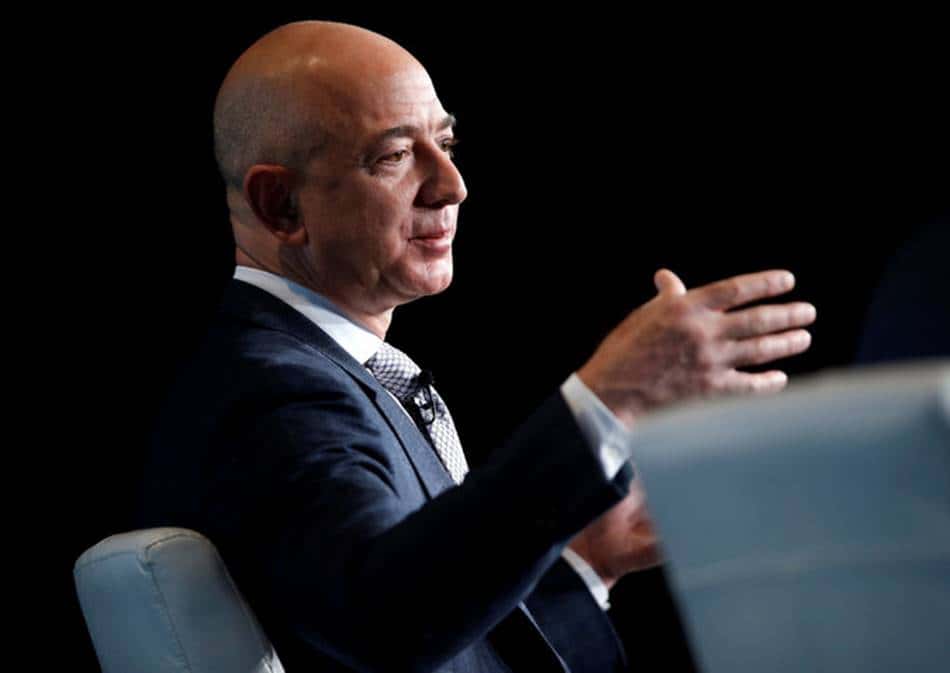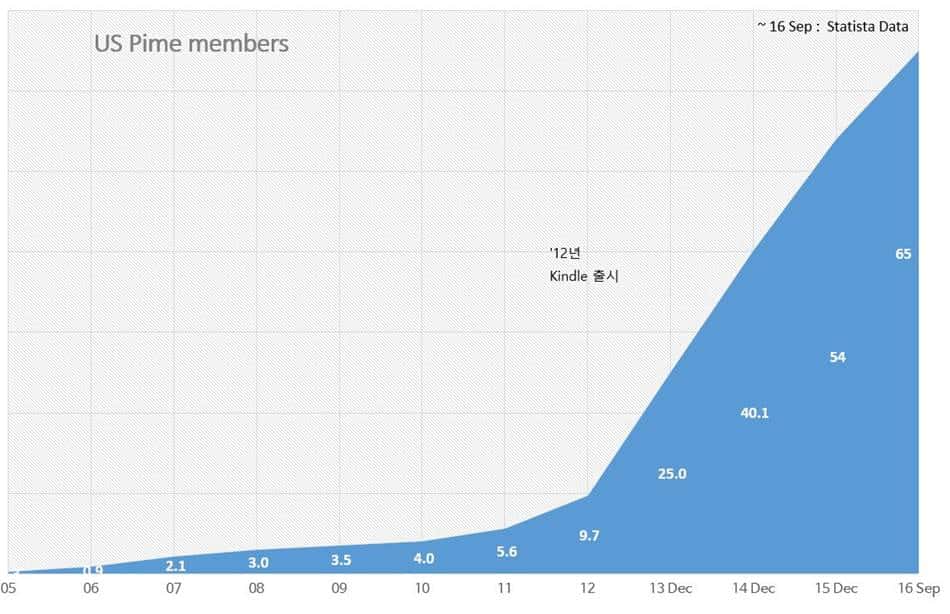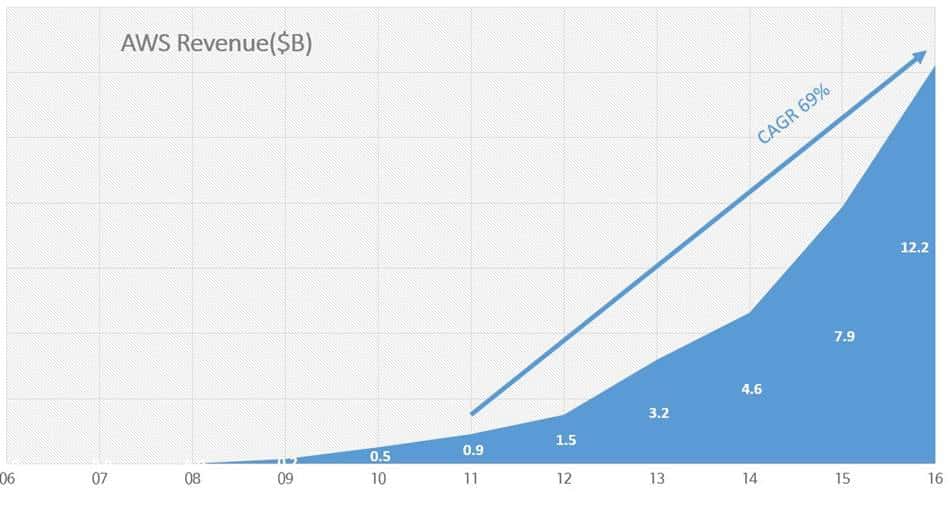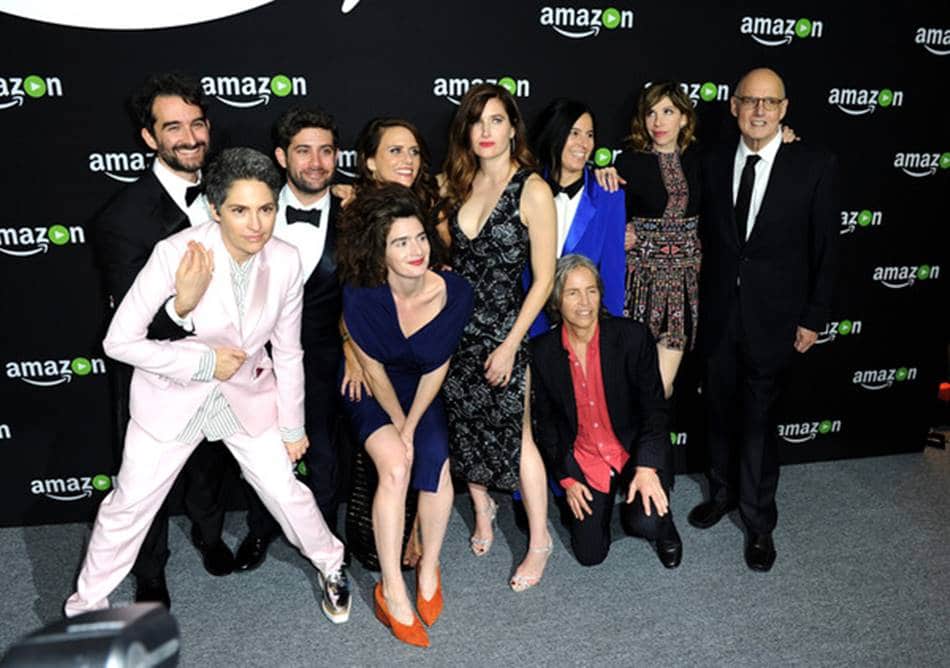2017년 4월 13일(현지 시간 4월 12일), 아마존 CEO 제프 베조스는 주주들에게 보내는 편지를 공개했습니다. 이 편지엔 아마존의 경영 철학이 잘 들어나 있고 배워야할 포인트가 잘 정리되어 있다는 평이 자자 합니다. 페북에서도 많이 공유되었고 언론에서도 많이 다루어졌습니다.
Jeff Bezos, the CEO of Amazon, Annual letter to shareholders
베조스는 직접 자기 생각을 고민해 이런 편지를 보낸곤 하는데요. 1997년 아마존 주식이 상장되면서 주주들에게 쓴 첫 편지에서 '첫날의 다짐'을 담았습니다. 2017년에 보내는 편지는 흔들리지 않고 '첫 날'의 마음으로 경영에 임하겠다는 다짐을 담았습니다.
이렇게 베조스는 자신의 철학과 전략을 고민하겸서 정교화하고 이를 주주와 직원들과 공유하면서 아마존을 이끌어 오다보니 오늘의 아마존이라는 훌륭한 결과가 나오지 않았나 생각해봅니다.
▽ 아마존 CEO 제프 베조스의 주요 편지 이력
Source : 조선일보

공부하는 차원에서 제프 베조스의 편지를 번역해 보았습니다.
여기에서 Day 1, Day라는 단어가 나오는데요 이를 어떻게 해석할지 고민이 많있습니다. 고민끝에 제프 베조스 아마존 CEO의 경영철학
글의 표현을 빌려 첫 날과 2막이라고 번역을 했는데요. word님의 지적이 타당하다는 생각이 들었고 직관적으로 Day 1(첫 날), Day 2(둘째 날)로 변경했습니다. 의견을 주신 word님께 감사드립니다.
Day 1(첫 날)은 비지니스를 시작하는 초심을 의미하고 Day 2(둘째 날)은 초심을 잃고 활력을 잃은 상태를 표현하고 있습니다.
1. 제프 베조스의 편지
"제프, 아마존의 Day 2(둘째 날)는 어떨 것 같아?" “Jeff, what does Day 2 look like?”
최근 전사회의에서 이런 질문을 받았습니다. 그러면 저는 수십년동안 매일을 첫 날처럼 생각한다고 이야기 해줍니다. Day 1이라 명명된 아마존 건물에서 일했고 아마존 빌딩을 (새로 신축해)옮길 때 이 이름을 그대로 사용했습니다.(아마존 본사는 2015년 시애틀에 세운 새로운 본사 건물로 이주했는데 이 건물을 Day One이라고 부릅니다. 역자 주) 저는 이 주제에 대해서 고민해 보았습니다.
"Day 2(둘째 날)는 정체를 뜻합니다. 무관함이 이어지고 격렬하고 고통스러운 쇠퇴를 동반하고 죽음에 이르게 합니다. 그것이 항상 Day 1(첫 날)처럼 생각하는 이유입니다.
분명하게도, 이런 쇠퇴는 극도로 느리게 진행됩니다. 어떤 회사는 수십년 동안 Day 2(둘째 날)를 격을지도 모르지만 (모든 회사가) 최종적으로 (Day 2(둘째 날))를 격을 것입니다.
저는 "Day 2(둘째 날)가 오는 것을 어떻게 막을 수 있지?"라는 질문에 더 흥미가 있습니다. “(아마존과 같이)큰 조직에서 어떤 전략과 전술로 Day 1(첫 날)과 같이 활력을 유지할 수 있을까요?"
그러한 질문에 간단히 대답할 수는 없습니다. 거기에는 많은 요소들과 다양한 길 그리고 많은 함정이 있을 것 입니다. 저는 이에 대한 전체 답을 알지는 못하지만 일부는 답을 드릴 수 있습니다. 여기에 Day 1(첫째날)을 지키기 위한 필수 불가결한 지침 패키지는 있습니다. 그것은 고객에게 몰입하기, '프락시'에 대해 의구심을 갖기, 외부 환경과 트렌드 수용 그리고 빠른 의사결정이 그것입니다.

진심으로 고객에게 몰입하기 True Customer Obsession
비지니스를 강화하는 여러가지 방법이 있습니다. 경쟁자에 집중할 수 도 있으며 제품에 중점을 둘 수도 있으며 기술에 방점을 둘 수도 있고 또는 비지니스 모델을 중시할 수도 있습니다. 그러나 제 견해로는 고객 중심이 Day 1(첫 날)의 활력을 유지할 수 있습니다.
왜 그렇까요? 고객 중심 접근 방식에는 많은 장점이 있지만 그 중에서 가장 큰 것은 고객들이 항상 언제나 불만족스러워한다는 점에 있습니다. 심지어 제품에 대해서 호평을 하고 비지니스가 잘 나갈때조차 말이죠. 고객들은 아직 제품에 대해서 모르는 경우에도 더 나은 것을 원합니다. 당신이 고객을 즐겁게 하려고 한다면 고객들을 대신해서 먼가를 만들어내게 됩니다. 아무도 아마존 프라임 멤버쉽을 만들라고 하지는 않았지만 결국 고객들은 아마존 프라임 멤버쉽간은 것을 원했다는 것이 분명해졌습니다. 저는 이러한 많은 예들을 들 수 있습니다.
▽ 아마존 미국 프라임 멤버수 추이 Amazon US prime members trend,
편지에는 없지만 이해를 돕기위해 추가했다.
Source : Statista and others

Day 1(첫 날)의 활력을 유지하는 것은 참을성 있게 실험해 보고, 실패를 수용하고, 씨앗을 심고, 묘목을 보호하고, 고객이 기뻐할 수 있도록 전념하는 것입니다. 고객에 집중하는 것은 고객이 좋아할만한 일을 많이 만드는 것입니다.
프락시에 대한 의구심 Resist Proxies
회사가 커지고 복잡해질수록 프락시를 관리하는 경향이 짙어 집니다. 이는 다양한 형태와 크기로 다가오며 이는 매우 위험하며, 매우 미묘하며 Day 2(둘째 날)의 전형적인 특징입니다.
(프락시란 궁극적인 목적은 아니지만 반드시 거쳐야하는 과정이고 그 과정에서 목적처럼 느껴지는 것을 의미합니다.)
아주 일반적인 예가 절차라는 프로세스가 그것입니다. 좋은 프로세스는 당신이 고객에게 잘 봉사할 수 있도록 도와 줍니다. 그러나 당신이 유의하지 않는다면 프로세스가 문제가 될 수 있습니다. 이는 대규모 조직에서 흔히 발생하는 문제입니다. 프로세스가 원하는 결과에 대한 프록시가 됩니다. 결과를 보지 않고 프로세스대로 진행되었는지를 보게 되죠. 주니어 리더가 '우리는 정해진 프로세스대로 진행했어요'라며 나쁜 결과를 옹호하는 상황을 만나게 됩니다. 경험많은 리더라면 그런 나쁜 결과를 만든 프로세스를 조사하고 프로세스를 개선할 기회로 활용할 것입니다. 프로세스가 중요한게 아닙니다. "여러분이 프로세스를 이용하고 있습니까? 아니면 프로세스가 여러분을 장악하고 있습니까?"라고 질문해볼 필요가 있습니다. Day 2(둘째 날)에 있는 회사에서 두번째와 같은 상황을 쉽게 볼 수 있습니다.
또 다른 프락시의 예로 시장조사 및 고객 서베이가 고객을 위한 프락시가 될 수 있습니다. 이는 제품을 발명하고 설계할 때 특히 위험합니다. "베타 테스터의 55%는 이 기능에 만족합니다. 그리고 이 수치는 첫번째 조사에서보다 46% 증가한 수치입니다."라고 보고될 수 있습니다. 이는 해석하기 어렵고 오독할 가능성이 높습니다.

훌륭한 발명가, 디자이너는 그들의 고객을 깊이 이해합니다. 그들은 이 직관을 발전시키는 데에 엄청난 에너지를 투입합니다. 그들은 설문 조사에서 발견 할 수 있는 평균보다 더 많은 스토리를 연구하고 이해하려고 합니다. 그들은 (그 디자인 또는 제품을)안고 살고 있습니다.
저는 베타 테스트나 설문 조사에 반대하지 않습니다. 그러나 제품 또는 서비스 책임자는 고객을 이해하고 비전을 갖고 제품을 사랑해야 합니다. 그런 다음 베타 테스트 및 조사를 통해 사각 지대를 찾을 수 있습니다. 놀라운 고객 경험은 진실함(heart), 직감(intuition), 호기심(curiosity), 제대로 사용해 보기(play), 끈기(guts), 계속된 테스트(taste)로 시작됩니다. 설문 조사에서는 그 중 어느 것도 발견 할 수 없습니다.
외부 환경과 트렌드를 수용하기 Embrace External Trends
트렌드를 빨리 받아드리지 않으면 부지불식간에 Day 2(둘째 날)로 전락할 수 있습니다. 당신이 트렌드와 싸운다면(거부한다면) 그것은 미래와 다투는(거부하는) 것입니다. 트렌드르 받아드리고 순풍에 편승하세요.
이런한 빅 트렌드를 알아차리는 게 어려운게 아니라(이에 대해서 많은 대화를 나누고 글을 읽습니다) 거대 조직에서 이를 받아드리는게 이상하게도 어려울 수 있습니다. 우리는 지금 머신러닝과 AI라는 명명백백한 트렌드 하에 있습니다.
지난 수십년동안 켬퓨터는 프로그램머가 명확한 규칙과 알고리즘으로 설명할 수 있는 작업을 광법위하게 자동화했습니다. 현대 머신 러닝은 정교한 규칙이 적용되는 작업에 대해서 동일한 작업을 수행 할 수 있게 되었습니다.
아마존에서는 몇년 동안 머신러닝을 어딘가에 적용하기 위해 노력해 왔습니다. 이런 작업중의 일부는 눈에 띄는 성공을 거두엇습니다. 자동화된 프라임 에어 배송 드론, 계산대를 없애겠다는 비젼을 실현한 아마존 고 편의점 그리고 아마존의 클라우드 기반 인공지능 비서인 알렉사(아마존 에코는 제때 공급을 못할 정도로 판매가 급증하고 있습니다.)
머신 러닝은 이러한 서비스의 백단에서 역활을 하고 있습니다. 이는 수요 예측, 제품 검색 순위, 제품 추천, 머천다이징 게재 위치, 사기 탐지, 번역 등등에 사용되고 있습니다. 눈에 덜 띄지만 머신러닝은 조용하지만 의미있는 핵심 작업을 개선하는 역활을 하고 있습니다.
AWS(아마존 웹서비스)관련해 모든 조직 또는 기업이 이런 고급 기술을 활용할 수 있도록 머신러닝과 AI에 대한 비용 및 장벽을 낮출 수 있어 매우 기쁨니다.
▽ 아마존 웹서비스 매출액 추이 Amazon Web Service(AWS) Revenue trend,
Source : Amazon 외

아마존은 P2 작업 인스턴스(작업 부하에 맞게 최적화 됨)에서 실행되는 널리 사용되는 심층 학습 프레임 워크를 미리 패키지화하여 고객사들은 이미 초기 질병 탐지부터 작물 수확량 증가에 이르기까지 다양한 분야에서 모든 곳에 강력한 시스템을 개발하고 있습니다. 그리고 아마존은 아마존의 고급 서비스를 편리한 형태로 제공하고 있습니다. Amazon Lex (Alexa의 내부 내용), Amazon Polly 및 Amazon Rekognition은 자연어 이해, 음성 생성 및 이미지 분석에서 많은 어려움을 제거해 줍니다. 이는 간단한 API 호출로 액세스 할 수 있으므로 머신 러닝 전문가가 필요하지 않습니다.
빠른 의사결정 High-Velocity Decision Making
Day 2(둘째 날)에 진입한 회사는 훌륭한 결정을 내리지만 그 결정은 매우 천천히 이루어집니다. Day 1(첫째날)과 같은 활력과 역동성을 유지하려면 훌륭한 결정을 빠르게 내려야 합니다.
이러한 것은 신생 기업에게는 쉬운 일이나 대규모 조직에게는 쉽지 않은 일입니다.
아마존의 시니어들은 의사결정 속도를 가속화하기로 하였습니다. 비지니스에서 속도의 문제는 빠른 의사결정 환경을 보면 더욱 재미있는 현상을 볼 수 있습니다.
우리가 모든 답을 알지는 못하지만 여기 몇가지 생각의 단초들이 있습니다.
첫째는 모든 것에 완벽하게 맞는 의사 결정 프로세스가 있다고 착각하지 마세요. 모든 것은 바뀔 수 있습니다. 하나의 결정을 하드라도 여러 가지의 결과가 나올 수 있습니다. (직역은 출입문이 있습니다. 역자 주) 그리니 의사 결정은 빠르고 가벼워야 합니다.
둘째는 대부분의 결정은 정보가 70%정도 모이면 바로 의사 결정 해야 합니다. 90% 이상의 정보를 기다리다 보면 의사 결정이 너무 느려지게 됩니다. 또한 어느 쪽이든 나쁜 결정을 신속하게 인식하고 수정하는데 익숙해져야 합니다. 당신이 코스 교정에 능숙하다면(중간에 바로 결정을 변경할 마음의 준비가 되어 있다면) 잘못된 의사 결정은 생각보다 비용이 덜 들지만 늦게 의사 결정은 비싼 댓가를 치워야 합니다.
셋째는 '동의 받지 않고 저지르다'라는 문구를 사용하는 것입니다. 이 문구는 많은 시간을 절약해줄 것입니다. 합의가 없드라도 특정 전략이나 방향에 대해서 확신이 있다면 '당신들이 이것에 반대하는 것을 알지만 저와 같이 도박을 걸어보지 않겠습니까?'라는 표현을 사용하는 것이죠. 지금 이 시점에 아무도 확실한 답을 알 수 없으므로 당신은 쉽고 빨리 동의를 얻어 낼 수 있습니다. 이런 유형의 문장은 무궁무진하게 만들 수 있습니다.
당신이 상사라면 이런 방법을 사용할 수 있습니다. 나는 항상 동의를 받지 않는다. I disagree and commit all the time.
우리는 최근에 아마존 스튜디오를 만들었습니다. 그 당시 스튜디오를 만들자는 저의 제안에 팀원들은 충분히 흥미 있을 것인지? 만들기에 복잡할 것인지? 비지니스 조건이 좋은지 그리고 우리는 얼마든지 다른 기회가 있다는 점에서 논란의 여지가 있다는 반응을 보이며 반대 했었습니다.
저는 '동의 받지 않고 저질렀고' 나중에 이것이 가장 좋은 결과를 낼 것이라고 믿었습니다. 팀이 제가 결정을 내리도록 하는 것이 아니라 나를 설득하려고 했다면 그 의사 결정은 엄청 지연 됐을 것입니다.
아마존 스튜디오는 11개 에미상, 6개 골든글로브상, 3개 오스카상을 탈정도로 엄청 성공을 거두었습니다.
▽ 아마존 스튜디오 골든 글러브상 수상 파티,
이미지 소스- ZIMBIO

넷째는 팀의 진정한 불균형 이슈를 조기에 간파하고 즉시 불일치 문제를 해소해야합니다. 때때로 팀원들은 다른 목표를 가지고 있고 근본적으로 다른 견해를 가지고 있을 수 있습니다. 이러한 불일치는 쉽게 고쳐지지 않습니다. 수많은 토론과 수많은 미팅에도 불구하고 뿌리깊은 불일치는 쉽게 치유되지 않습니다.
일상적인 해결 메커니즘이 모두를 지치게 합니다.
저는 아마존에서 수년동안 진정한 불일치의 예를 많이 보아왔습니다. 우리가 제3자 판매인(third party seller)이 제품 세부 정보 페이지에 직접 작성토록 결정했을 때가 이러한 사례의 절정이었을 것입니다. 똑똑하고 선의에 가득찬 아마존 사람들은 이런한 정책 방향을 이해하지 못햇습니다. 커다란 의사 결정은 수백가지의 작은 의사 결정을 가이드하는데 이것들 중 많은 것들이 경영진까지 올라 와서 결정되어야 했습니다.
"당신이 나를 꺾었다. You’ve worn me down"는 것은 끔찍한 의사 결정 프로세스입니다. 이것은 매우 느리고 기력을 소모케합니다. 이럴 때는 빨리 위로 올려 의사 결정을 경영진에 위임합니다. 그게 더 낫습니다.
당신이 의사 결정의 질을 중시합니까? 아니면 의사 결정의 속도에도 관심을 기울였습니까? 세계의 트렌드에 따라가고 있나요? 당신은 프록시의 먹이감인가요? 아니면 프록시가 당신 비지니스를 잘 지원하고 있나요? 아니면 무엇보다도 고객을 기쁘게하려고 하고 있나요?
우리는 큰 회사의 범위와 역량과 작은 회사의 정신과 마음을 가질 수 있습니다. 그렇지만 우리는 선택을 해야만 합니다.
아마존이 서비스를 할 수 있도록 해준 모든 고객들과 아마존을 지원해 주는 주주분들께 그리고 열심히 일하면서, 독창성과 열정을 보여 주시는 아마존 직원 여러분께 깊은 감사를 드립니다.
언제나처럼 1997년 편지 사본을 첨부합니다.
1 일 남았습니다.
제프 베조스
▽ 아마존 CEO 제프 베조스가 창업할 때 만들어 사용했다는 문짝을 이어 만든 책상,
베조스는 초심을 잃지 않기 위해 최근까지 이 책상을 사용했다고 한다.

2. 제프 베조스 편지 영문
“Jeff, what does Day 2 look like?”
That’s a question I just got at our most recent all-hands meeting. I’ve been reminding people that it’s Day 1 for a couple of decades. I work in an Amazon building named Day 1, and when I moved buildings, I took the name with me. I spend time thinking about this topic.
“Day 2 is stasis. Followed by irrelevance. Followed by excruciating, painful decline. Followed by death. And that is why it is always Day 1.”
To be sure, this kind of decline would happen in extreme slow motion. An established company might harvest Day 2 for decades, but the final result would still come.
I’m interested in the question, how do you fend off Day 2? What are the techniques and tactics? How do you keep the vitality of Day 1, even inside a large organization?
Such a question can’t have a simple answer. There will be many elements, multiple paths, and many traps. I don’t know the whole answer, but I may know bits of it. Here’s a starter pack of essentials for Day 1 defense: customer obsession, a skeptical view of proxies, the eager adoption of external trends, and high-velocity decision making.
True Customer Obsession
There are many ways to center a business. You can be competitor focused, you can be product focused, you can be technology focused, you can be business model focused, and there are more. But in my view, obsessive customer focus is by far the most protective of Day 1 vitality.
Why? There are many advantages to a customer-centric approach, but here’s the big one: customers are always beautifully, wonderfully dissatisfied, even when they report being happy and business is great. Even when they don’t yet know it, customers want something better, and your desire to delight customers will drive you to invent on their behalf. No customer ever asked Amazon to create the Prime membership program, but it sure turns out they wanted it, and I could give you many such examples.
Staying in Day 1 requires you to experiment patiently, accept failures, plant seeds, protect saplings, and double down when you see customer delight. A customer-obsessed culture best creates the conditions where all of that can happen.
Resist Proxies
As companies get larger and more complex, there’s a tendency to manage to proxies. This comes in many shapes and sizes, and it’s dangerous, subtle, and very Day 2.
A common example is process as proxy. Good process serves you so you can serve customers. But if you’re not watchful, the process can become the thing. This can happen very easily in large organizations. The process becomes the proxy for the result you want. You stop looking at outcomes and just make sure you’re doing the process right. Gulp. It’s not that rare to hear a junior leader defend a bad outcome with something like, “Well, we followed the process.” A more experienced leader will use it as an opportunity to investigate and improve the process. The process is not the thing. It’s always worth asking, do we own the process or does the process own us? In a Day 2 company, you might find it’s the second.
Another example: market research and customer surveys can become proxies for customers – something that’s especially dangerous when you’re inventing and designing products. “Fifty-five percent of beta testers report being satisfied with this feature. That is up from 47% in the first survey.” That’s hard to interpret and could unintentionally mislead.
Good inventors and designers deeply understand their customer. They spend tremendous energy developing that intuition. They study and understand many anecdotes rather than only the averages you’ll find on surveys. They live with the design.
I’m not against beta testing or surveys. But you, the product or service owner, must understand the customer, have a vision, and love the offering. Then, beta testing and research can help you find your blind spots. A remarkable customer experience starts with heart, intuition, curiosity, play, guts, taste. You won’t find any of it in a survey.
Embrace External Trends
The outside world can push you into Day 2 if you won’t or can’t embrace powerful trends quickly. If you fight them, you’re probably fighting the future. Embrace them and you have a tailwind.
These big trends are not that hard to spot (they get talked and written about a lot), but they can be strangely hard for large organizations to embrace. We’re in the middle of an obvious one right now: machine learning and artificial intelligence.
Over the past decades computers have broadly automated tasks that programmers could describe with clear rules and algorithms. Modern machine learning techniques now allow us to do the same for tasks where describing the precise rules is much harder.
At Amazon, we’ve been engaged in the practical application of machine learning for many years now. Some of this work is highly visible: our autonomous Prime Air delivery drones; the Amazon Go convenience store that uses machine vision to eliminate checkout lines; and Alexa,1 our cloud-based AI assistant. (We still struggle to keep Echo in stock, despite our best efforts. A high-quality problem, but a problem. We’re working on it.)
But much of what we do with machine learning happens beneath the surface. Machine learning drives our algorithms for demand forecasting, product search ranking, product and deals recommendations, merchandising placements, fraud detection, translations, and much more. Though less visible, much of the impact of machine learning will be of this type – quietly but meaningfully improving core operations.
Inside AWS, we’re excited to lower the costs and barriers to machine learning and AI so organizations of all sizes can take advantage of these advanced techniques.
Using our pre-packaged versions of popular deep learning frameworks running on P2 compute instances (optimized for this workload), customers are already developing powerful systems ranging everywhere from early disease detection to increasing crop yields. And we’ve also made Amazon’s higher level services available in a convenient form. Amazon Lex (what’s inside Alexa), Amazon Polly, and Amazon Rekognition remove the heavy lifting from natural language understanding, speech generation, and image analysis. They can be accessed with simple API calls – no machine learning expertise required. Watch this space. Much more to come.
High-Velocity Decision Making
Day 2 companies make high-quality decisions, but they make high-quality decisions slowly. To keep the energy and dynamism of Day 1, you have to somehow make high-quality, high-velocity decisions. Easy for start-ups and very challenging for large organizations. The senior team at Amazon is determined to keep our decision-making velocity high. Speed matters in business – plus a high-velocity decision making environment is more fun too. We don’t know all the answers, but here are some thoughts.
First, never use a one-size-fits-all decision-making process. Many decisions are reversible, two-way doors. Those decisions can use a light-weight process. For those, so what if you’re wrong? I wrote about this in more detail in last year’s letter.
1 For something amusing, try asking, “Alexa, what is sixty factorial?”
Second, most decisions should probably be made with somewhere around 70% of the information you wish you had. If you wait for 90%, in most cases, you’re probably being slow. Plus, either way, you need to be good at quickly recognizing and correcting bad decisions. If you’re good at course correcting, being wrong may be less costly than you think, whereas being slow is going to be expensive for sure.
Third, use the phrase “disagree and commit.” This phrase will save a lot of time. If you have conviction on a particular direction even though there’s no consensus, it’s helpful to say, “Look, I know we disagree on this but will you gamble with me on it? Disagree and commit?” By the time you’re at this point, no one can know the answer for sure, and you’ll probably get a quick yes.
This isn’t one way. If you’re the boss, you should do this too. I disagree and commit all the time. We recently greenlit a particular Amazon Studios original. I told the team my view: debatable whether it would be interesting enough, complicated to produce, the business terms aren’t that good, and we have lots of other opportunities. They had a completely different opinion and wanted to go ahead. I wrote back right away with “I disagree and commit and hope it becomes the most watched thing we’ve ever made.” Consider how much slower this decision cycle would have been if the team had actually had to convince me rather than simply get my commitment.
Note what this example is not: it’s not me thinking to myself “well, these guys are wrong and missing the point, but this isn’t worth me chasing.” It’s a genuine disagreement of opinion, a candid expression of my view, a chance for the team to weigh my view, and a quick, sincere commitment to go their way. And given that this team has already brought home 11 Emmys, 6 Golden Globes, and 3 Oscars, I’m just glad they let me in the room at all!
Fourth, recognize true misalignment issues early and escalate them immediately. Sometimes teams have different objectives and fundamentally different views. They are not aligned. No amount of discussion, no number of meetings will resolve that deep misalignment. Without escalation, the default dispute resolution mechanism for this scenario is exhaustion. Whoever has more stamina carries the decision.
I’ve seen many examples of sincere misalignment at Amazon over the years. When we decided to invite third party sellers to compete directly against us on our own product detail pages – that was a big one. Many smart, well-intentioned Amazonians were simply not at all aligned with the direction. The big decision set up hundreds of smaller decisions, many of which needed to be escalated to the senior team.
“You’ve worn me down” is an awful decision-making process. It’s slow and de-energizing. Go for quick escalation instead – it’s better.
So, have you settled only for decision quality, or are you mindful of decision velocity too? Are the world’s trends tailwinds for you? Are you falling prey to proxies, or do they serve you? And most important of all, are you delighting customers? We can have the scope and capabilities of a large company and the spirit and heart of a small one. But we have to choose it.
A huge thank you to each and every customer for allowing us to serve you, to our shareowners for your support, and to Amazonians everywhere for your hard work, your ingenuity, and your passion.
As always, I attach a copy of our original 1997 letter. It remains Day 1.
Sincerely,
Jeff
Jeffrey P. Bezos
Founder and Chief Executive Officer
Amazon.com, Inc.

